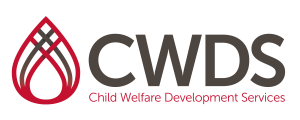CWDS Curriculum
California’s Structured Decision Making Orientation
Level: Advanced Practice – Lineworker, Supervisor
Credits: 12
Intended Audience: Line workers, supervisors, and administrators who want to learn about Structured Decision Making and improve their skills in risk assessment
Intended Objectives:
- Increase knowledge of overall SDM model
- Increase specific knowledge of SDM assessment tools, definitions, and policy and procedures
- Apply SDM assessment tools to cases with use of case vignettes.
- Introduce ideas about how SDM model fits with other agency practices, such as family-centered approaches and team decision making
- Understand that SDM is not a practice model but rather a decision making model
- Discuss how SDM will be utilized in the particular county and any policies and procedures that are particular to the County
Topics Include:
- Overview and introduction of the SDM Manual
- Hotline tools
- Safety assessment
- Risk assessment
- Family strengths and needs assessment
- Contact guidelines for Ongoing cases
- Risk reassessment for In-Home cases
- Reunification reassessment
- Implementation details
CalSWEC Competencies Addressed:
1.1 Student demonstrates respect, fairness, and cultural competence in assessing, working with, and making service decisions regarding clients of diverse backgrounds.
1.3 Student demonstrates the ability to conduct an ethnically and culturally competent assessment of a child and family and to develop an effective intervention plan.
3.2 Student demonstrates the ability to perform a preliminary safety assessment and to monitor the safety of the child through ongoing assessment of risk.
3.3 Student is able to identify the major family, health, and social factors contributing to child abuse and neglect, as well as positive factors that acted to preserve the family and protect the child.
3.8 Student demonstrates the ability to respectfully relate to, engage, and assess family members from a strengths-based “person in environment” perspective, and to develop and implement a case plan based on this assessment.
7.3 Student is able to plan, prioritize, and effectively complete activities and task within required time frames.
Assessment and Investigation



